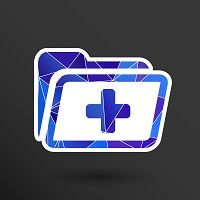Weighing the Challenges and Benefits of Dental EHRs
Dental offices have been slow to adopt electronic health records, in part because they haven't had the same regulatory incentives as physicians. But the software can bring benefits to dental practices, even if they're not required.
revealed that, according to a report from the Office of the National Coordinator for Health IT, 83% of physicians nationwide have adopted electronic health record systems. Meaningful use incentive programs are considered one of the main factors for the increased adoption.
But when it comes to dentists, meaningful use has not had the same impact. Why?
“My understanding is that meaningful use had some restrictions on the patient population that a dentist had to serve in order to be eligible,” explains Terry O’Toole, DDS, vice chair of the American Dental Association Council on Dental Practice. “And frankly, I don’t think that requirement met the patient profile of most dental practices, and therefore, it didn't have lot of applicability in the case of the average dental practice.”
However, O’Toole believes the tide is beginning to turn.
Progress Through Partnering
O’Toole says the ADA feels strongly that EHRs are a good investment for dental practices, and has invested resources in standards development, enabling vendors to put forward an electronic health record that meets dentists’ needs.
“One thing I think a lot of the dental EHR vendors have done is partnered in some way with a component of the medical EHR,” O’Toole says. “I think industry has tried to respond in that way, to try and create a greater use of a combined dental and medical EHR.”
One of the greatest challenges EHRs have faced is the issue of interoperability between one medical practice and another. That same challenge exists, to a certain extent, with interoperability between a medical practice and a dental practice. Addressing that challenge becomes increasingly important given the growing recognition of the connection between oral health and medical health.
“You can’t have good general health if you don’t have good oral health,” O’Toole says. “The ADA is doing a lot of things to bring awareness to oral health issues, and making sure people understand the correlations that exist between poor oral health and other medical conditions. And I do see those things improving over time.”
Recognizing the Benefits
One of the hurdles to overcome with increasing EHR adoption is the cost factor. While the growth of dental group practices has been a developing trend, there are still many dental providers operating as smaller, family-run practices. However, the benefits of EHR adoption, including increased efficiency and productivity, more efficient patient billing, and improved reimbursement, are clear.
Dental Associates of Manchester, located in Manchester, IA, understands the importance of those benefits. Connie Behnken, RDA, practice manager, was responsible for the overall integration of the XLDent EDR (electronic dental records) system, and more recently, DataMotion, which provides secure information transport services, into the practice.
The practice is progressive, and has been using the XLDent EDR system for the past 29 years. The DataMotion companion was brought on board three years ago. And the benefits, Behnken says, have been significant.
“If we need to send a digital x-ray to a specialist to look at, we can actually create a PDF right off of our XLDent system and import it into an e-mail and send it securely,” Behnken explains. “It’s super simple to use. It’s just like using your regular Gmail account.”
Behnken says one of the keys to successful integration is having everyone on the same page.
“Going from paper to electronic records was hard,” she admits. “But we came up with a plan, and XLDent helped us so that when we rolled it out it made sense. They were an integral part of making that happen, including helping us create the templates for our progress notes which made us much more efficient. We’re able to make sure that everybody is getting the exact same information, and the standard of care has improved.”
Twelve months after flipping the switch on the XLDent EDR system the practice was able to virtually forgo pulling a paper chart.
Moving Forward
Though it’s only speculation, O’Toole believes that dentists’ use of electronic health records will continue to grow—particularly given the increasing correlation between poor oral health and other medical conditions.
“I think dentists realize that anything they can do to improve oral health will certainly improve the overall health of the patient,” O’Toole says. “Just as physicians are looking at certain issues, dentists are looking at issues such as tobacco cessation. I see those things improving over time, as we need to work together to improve general health of the individual.”
ACTIVA BioACTIVE Bulk Flow Marks Pulpdent’s First Major Product Release in 4 Years
December 12th 2024Next-generation bulk-fill dental restorative raises the standard of care for bulk-fill procedures by providing natural remineralization support, while also overcoming current bulk-fill limitations.
